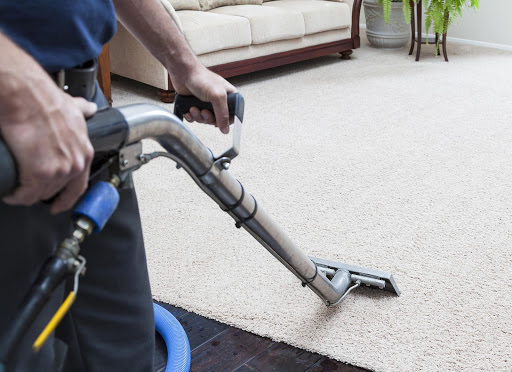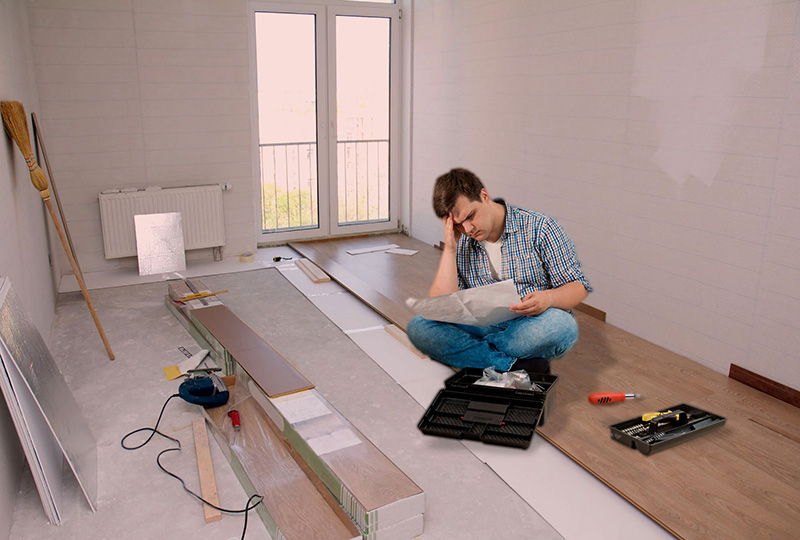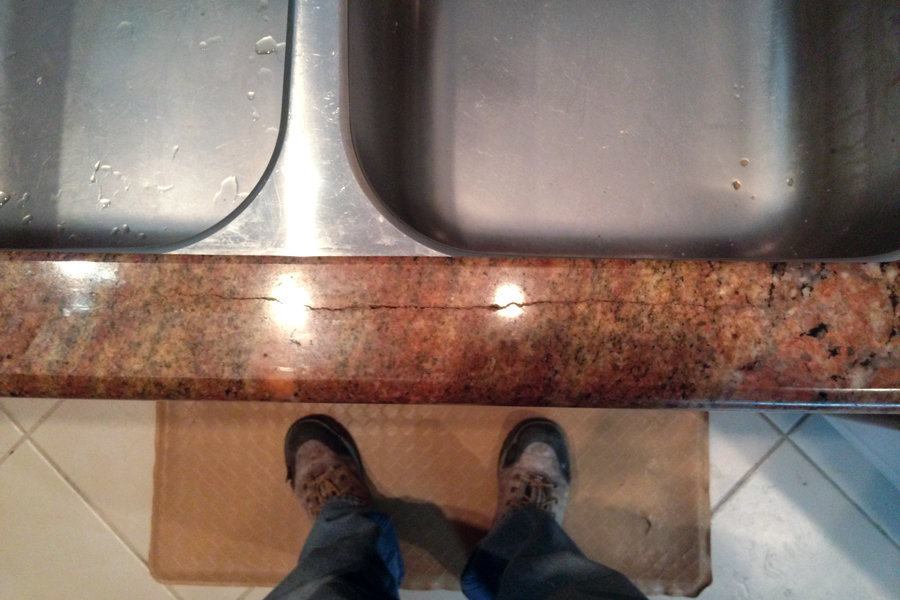If you've noticed a crack in the trap under your bathroom sink, you may be wondering what to do next. Ignoring the issue can lead to major plumbing problems and potential water damage, so it's important to address it as soon as possible. Here's a guide on how to fix a cracked trap under bathroom sink and prevent it from happening in the future.Cracked Trap Under Bathroom Sink: What to Do and How to Fix It
Before diving into the repair process, it's important to understand the function of a sink trap. The trap is a curved pipe located under your sink that traps debris and prevents clogs in your plumbing system. When the trap cracks, it can cause leaks and disrupt the flow of water. The first step is to identify where the crack is located. If the crack is small, you may be able to seal it with a waterproof epoxy or plumber's putty. However, if the crack is larger or extends to multiple areas, it's best to replace the trap entirely.How to Repair a Cracked Sink Trap
If you're confident in your DIY skills, you can attempt to fix the cracked trap yourself. Here's a step-by-step guide: Step 1: Turn off the water supply to the sink and put a bucket or towel under the trap to catch any water that may spill out. Step 2: Use a wrench to loosen the nuts and bolts that connect the trap to the sink and drain pipe. You may need to use pliers to remove any stubborn pieces. Step 3: Inspect the trap for cracks and clean it thoroughly with a brush and warm, soapy water. Step 4: If the crack is small, apply a waterproof epoxy or plumber's putty to seal it. Make sure to follow the instructions on the product carefully. Step 5: If the crack is larger or extends to multiple areas, it's best to replace the trap entirely.DIY Guide: Fixing a Cracked Trap Under Bathroom Sink
Understanding the common causes of a cracked trap can help you prevent it from happening in the future. Some of the main causes include: Old age: Over time, the constant exposure to water and debris can cause the trap to deteriorate and crack. Improper installation: If the trap was not installed correctly, it can put unnecessary pressure on certain areas, leading to cracks. Physical damage: Accidental hits or bumps can cause the trap to crack.Common Causes of a Cracked Trap Under Bathroom Sink
If you're unsure whether you need to replace the cracked trap or if it can be repaired, here are some signs to look out for: Visible cracks: If you can visibly see cracks in the trap, it's best to replace it to prevent further damage. Leaking water: If you notice water leaking from the trap, it's a sign that it needs to be replaced. Foul odors: A cracked trap can cause unpleasant odors to come from your sink due to trapped debris and bacteria.Signs You Need to Replace a Cracked Trap Under Bathroom Sink
If you've determined that the trap needs to be replaced, here's a step-by-step guide: Step 1: Turn off the water supply to the sink and place a bucket or towel under the trap to catch any water that may spill out. Step 2: Use a wrench to loosen the nuts and bolts that connect the trap to the sink and drain pipe. You may need to use pliers to remove any stubborn pieces. Step 3: Remove the old trap and clean the area thoroughly. Step 4: Install the new trap, making sure all connections are tight and secure. Step 5: Turn the water supply back on and check for any leaks. If everything looks good, you're all set!Step-by-Step Guide to Replacing a Cracked Trap Under Bathroom Sink
To avoid dealing with a cracked trap in the future, here are some tips to keep in mind: Regular maintenance: Inspect your sink trap periodically for any signs of wear and tear, and clean it regularly to prevent buildup. Be gentle: Avoid using excessive force when tightening or loosening the trap, as this can cause damage over time. Invest in quality materials: When replacing the trap, choose high-quality materials that will last longer and resist cracking.Preventing a Cracked Trap Under Bathroom Sink: Tips and Tricks
When shopping for a replacement trap, it's important to choose the right one for your specific sink and plumbing system. Consider the size, material, and compatibility with your current setup. If you're unsure, consult a professional or bring the old trap with you to the store for reference.How to Choose the Right Replacement Trap for Your Bathroom Sink
The decision to hire a professional or attempt a DIY repair ultimately depends on the severity of the crack and your level of experience. If the crack is small and you have the necessary skills and tools, a DIY repair may be a cost-effective option. However, for larger cracks or inexperienced individuals, it's best to hire a professional to ensure the job is done correctly and to avoid causing further damage.Professional vs. DIY: Which is the Best Option for Fixing a Cracked Trap Under Bathroom Sink?
If you're opting for a DIY repair, here are some top-rated products to consider: 1. Waterproof Epoxy: Perfect for small cracks, this product creates a strong and durable seal that can withstand water and pressure. 2. Plumber's Putty: Another option for small cracks, this putty can be easily molded and shaped to fit the area. 3. PVC Sink Trap: This type of trap is resistant to cracking and suitable for most bathroom sinks. 4. Flexible Sink Trap: Ideal for tight spaces, this trap can bend and flex to fit your specific setup. 5. Stainless Steel Sink Trap: For a long-lasting and sturdy option, consider a stainless steel trap that can withstand heavy use and won't crack easily.Top 5 Products for Repairing a Cracked Trap Under Bathroom Sink
The Importance of Proper Plumbing in Your Home Design

Avoiding a Common Issue: a Cracked Trap Under the Bathroom Sink
 When designing or renovating your home, it's easy to get caught up in the aesthetic details like paint colors and furniture choices. However, one crucial aspect that should not be overlooked is the plumbing system. A well-designed plumbing system not only ensures convenience and functionality, but it also helps prevent common issues, such as a cracked trap under the bathroom sink.
The trap
is a curved section of pipe located under the bathroom sink that is designed to prevent sewer gases from entering your home. It also catches debris and prevents it from clogging your pipes. However, over time, the trap can become cracked, either due to age or wear and tear, causing issues such as foul odors and leaks.
Cracked traps
are a common issue in homes, and they can lead to more significant problems if not addressed promptly. The trapped debris and stagnant water can attract pests and bacteria, creating an unsanitary and unpleasant environment in your bathroom. Additionally, the leaking water can damage your flooring and cabinets, leading to costly repairs.
Fortunately, there are measures you can take to prevent a cracked trap under your bathroom sink. One way is to ensure that your plumbing system is installed correctly and regularly maintained. Hiring a professional plumber to inspect and maintain your pipes can help catch potential issues before they become major problems.
Another crucial step is to choose high-quality materials for your plumbing system. Investing in durable pipes and fittings can save you from the hassle and expense of frequent repairs or replacements. Additionally, proper installation techniques, such as using proper sealants and tightening fittings, can help prevent cracks from forming in the trap.
In conclusion, when designing your home, don't overlook the importance of a well-designed plumbing system. It not only ensures convenience and functionality but also prevents common issues such as a cracked trap under the bathroom sink. By investing in quality materials and proper installation, you can avoid potential problems and keep your home in top shape. Remember, prevention is always better than a cure when it comes to plumbing issues.
When designing or renovating your home, it's easy to get caught up in the aesthetic details like paint colors and furniture choices. However, one crucial aspect that should not be overlooked is the plumbing system. A well-designed plumbing system not only ensures convenience and functionality, but it also helps prevent common issues, such as a cracked trap under the bathroom sink.
The trap
is a curved section of pipe located under the bathroom sink that is designed to prevent sewer gases from entering your home. It also catches debris and prevents it from clogging your pipes. However, over time, the trap can become cracked, either due to age or wear and tear, causing issues such as foul odors and leaks.
Cracked traps
are a common issue in homes, and they can lead to more significant problems if not addressed promptly. The trapped debris and stagnant water can attract pests and bacteria, creating an unsanitary and unpleasant environment in your bathroom. Additionally, the leaking water can damage your flooring and cabinets, leading to costly repairs.
Fortunately, there are measures you can take to prevent a cracked trap under your bathroom sink. One way is to ensure that your plumbing system is installed correctly and regularly maintained. Hiring a professional plumber to inspect and maintain your pipes can help catch potential issues before they become major problems.
Another crucial step is to choose high-quality materials for your plumbing system. Investing in durable pipes and fittings can save you from the hassle and expense of frequent repairs or replacements. Additionally, proper installation techniques, such as using proper sealants and tightening fittings, can help prevent cracks from forming in the trap.
In conclusion, when designing your home, don't overlook the importance of a well-designed plumbing system. It not only ensures convenience and functionality but also prevents common issues such as a cracked trap under the bathroom sink. By investing in quality materials and proper installation, you can avoid potential problems and keep your home in top shape. Remember, prevention is always better than a cure when it comes to plumbing issues.








































































